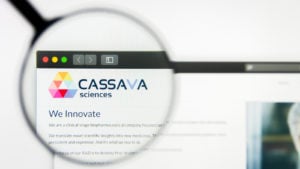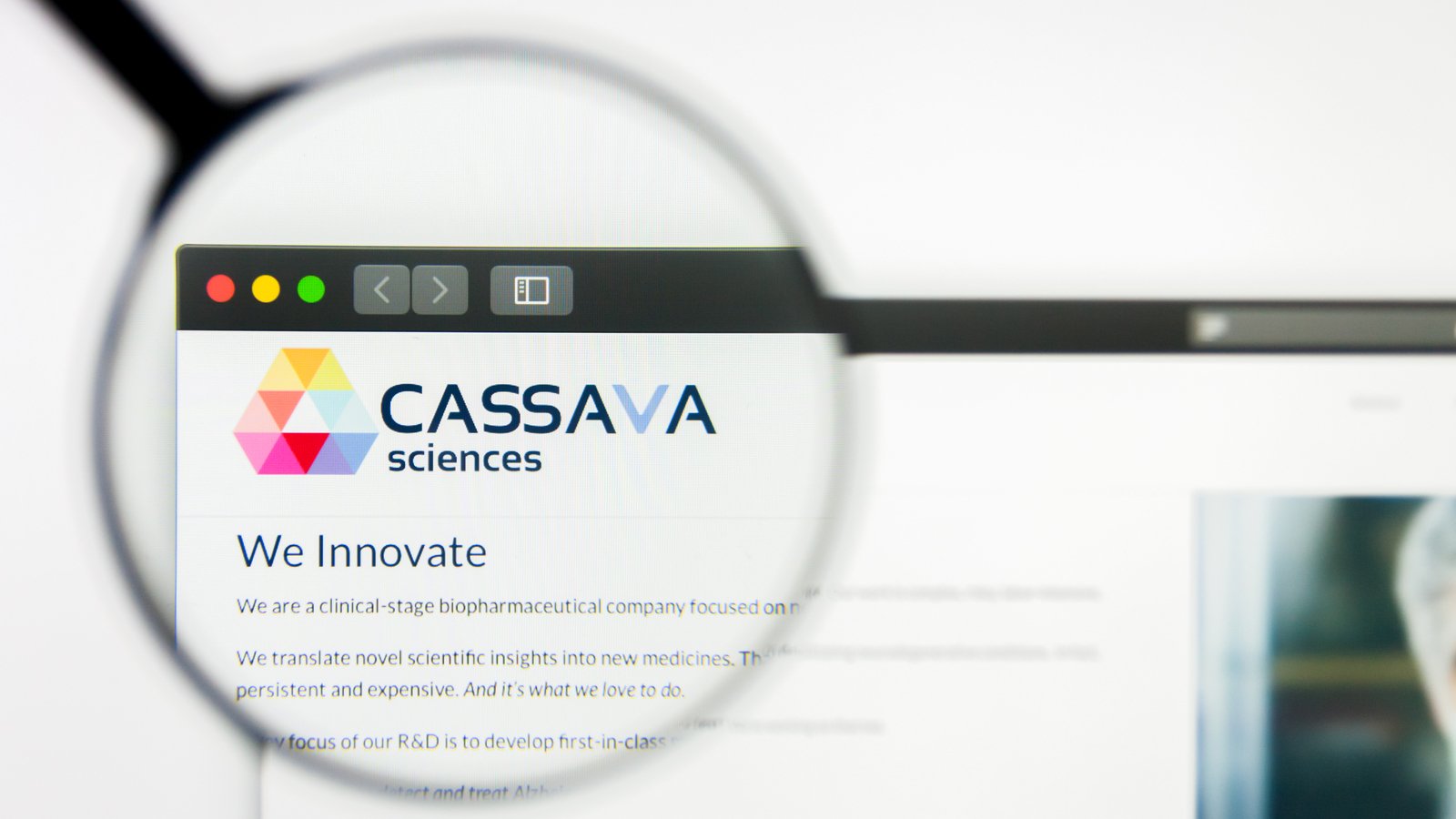Cassava Sciences (NASDAQ:SAVA) stands to gain a good deal this year. This will all depend on the company’s Phase 3 clinical trials progress in the results on actual patients with Alzheimer’s disease. SAVA stock could become a major winner as a result, or potentially a loser.

The upside will also be subject to how well the results are received both by the medical community and the market. As a result, SAVA stock is either going to be seen as a winner or a huge loser. There is probably not too much room in between.
As one author pointed out recently, the market thinks there is only about a 6% chance that the company’s Alzheimer’s drug, Simufilam, will be successful. But if it is successful, the author believes there is a 66% chance that the stock could rise 11 times before the U.S. Food and Drug Administration (FDA) approves the drug for Alzheimer’s treatment.
Where Things Stand With Cassava Sciences
The trials conducted up until now involve “the distribution of 147,000 Simufilam to more than 250 Alzheimer’s patients in at least 16 investigator sites.” So far there have been no drug-related serious adverse events.
However, these were open-label studies involving no placebos. The two Phase 3 clinical trials now underway involve a placebo and blind study. In fact, on page 17 of the company’s Jan. 2022 presentation on their website, it says:
“Treatment effects observed in an open-label study are not proof of drug safety or efficacy, nor can open-label data predict clinical success in a Phase 3 program.”
So, the company has been more or less compelled to proceed to a Phase 3 study in order to assure its efficacy. However, on page 23 of the slide deck, the company said that the FDA approved its Phase 3 protocol:
“FDA agrees that the completed Phase 2 program, together with an upcoming and well-defined Phase 3 clinical program, are sufficient to show evidence of clinical efficacy.”
So, you can see that if the Phase 3 trials go well, the FDA could well approve the drug for the treatment of Alzheimer’s disease. Therefore, in a way, it won’t matter what the market thinks about the results. The only issue is whether the FDA will approve the drug. And that alone will make the company.
Where This Leaves Cassava Sciences
I suspect that once the first study results come out for the Phase 3 trials the market will begin to focus on the mechanics of how the drug will get distributed once it is approved. The company’s Chief Executive Officer Remy Barbier has made it clear in interviews that the company will likely have to partner with a major drug manufacturer/distributor. This could lead to a revenue-sharing deal.
What is even more interesting here is the possibility that the company could announce a royalty/revenue-sharing deal prior to any results for Phase 3. This could also act as a major catalyst for SAVA stock. I suspect that will happen some time late in the first quarter and/or in the second quarter. Expect to see analysts begin to project the company’s valuation based on this.
So far, not many observers of the stock have put together cogent models with a major drug partner for Cassava Sciences. However, at today’s price, $47.95, the stock has a almost $2 billion market capitalization.
There are no analyst forecasts for 2023 or beyond. This goes to show that everyone is virtually waiting on the edge of their seat for the results of the Phase 3 clinical trials.
What To Do With SAVA Stock
I am personally very positive on SAVA stock and indeed have a position in the company. In fact, now that the stock is down off of its highs, I intend to buy more of the stock.
However, I freely admit that this is a highly speculative position to take. For example, as I pointed out above, there are no real estimates for the company’s earnings going forward. Moreover, there is no real assurance that the FDA will approve the drug as a treatment for Alzheimer’s.
Here is a simple probability exercise that shows why I have taken a position. Analysts seem to believe that if the drug is approved, the stock will be worth 11 times its price today. That represents a 10 times gain. But if it is not approved and the trials are a bust, the stock could easily fall 80% to 90%. Let’s call it negative 95%.
Now, let’s give the chance that it is going to be a success a one-third chance. That leaves a two-thirds chance it will bust.
So, here is the expected return (ER). We multiply 10 x 0.333, and get an ER of 3.333 times. But the downside results in an ER of -63.37% (i.e., negative 95% x 0.6666).
So, if we add the total ERs together, the total ER is still positive. In other words, SAVA stock is worth 3.7 times (i.e. 1 + 270% return) its price today, or $177.42. So, despite the risks, this looks like a pretty good risk-adjusted return on investment candidate.
On the date of publication, Mark R. Hake holds a long position in SAVA stock. The opinions expressed in this article are those of the writer, subject to the InvestorPlace.com Publishing Guidelines.
Mark Hake writes about personal finance on mrhake.medium.com and Newsbreak.com runs the Total Yield Value Guide which you can review here.
